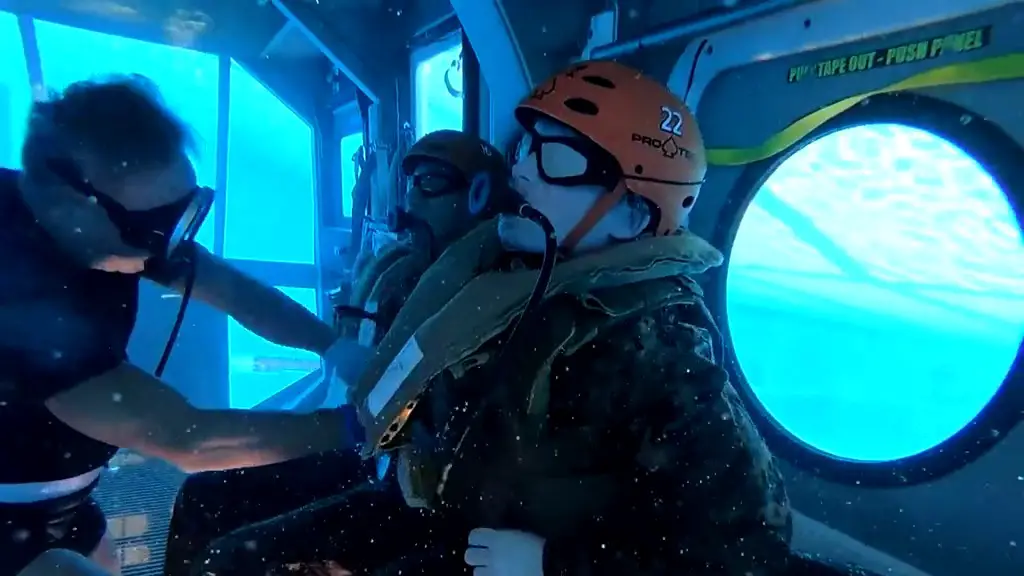U.S. Marines with 3rd Marine Logistics Group (MLG) conduct Helicopter Underwater Egress Training on Camp Hansen, Okinawa, Japan, Aug. 14, 2020. Marines train in Underwater Egress in order to be able to escape from a submerged helicopter in an emergency. 3rd MLG, based out of Okinawa, Japan, is a forward deployed combat unit that serves as III Marine Expeditionary Force’s comprehensive logistics and combat service support backbone for operations throughout the Indo-Pacific area of responsibility.
Helicopter Underwater Egress Training (known as in the United States; often abbreviated HUET, pronounced hue-wet, hue-way or you-way) is training provided to helicopter flight crews, offshore oil and gas industry staff law enforcement personnel, and military personnel who are regularly transported by helicopters over water. As the name implies, the purpose is to prepare them for emergency exit in the case of a crash landing over water.

While the training may be taken by crew and frequent passengers in all small aircraft that could ditch over water, a fixed wing aircraft such as a seaplane or small jet is not as prone to roll over as quickly or sink as rapidly as a helicopter with its main rotor on top of the aircraft. In addition, due to the slow speed of helicopters versus fixed wing aircraft and the lower height above the water, their cabins have a greater chance of being intact with passengers inside when ditched in the water.
United States Marine Corps and Navy personnel train at Naval Amphibious Base Coronado, California, Camp Lejeune, North Carolina, or Camp Hansen, Okinawa, Japan. The training involves simulated sinking in a pool while rotating the training module upside down and focuses students on bracing for impact, identifying primary and secondary exit points, avoiding smoke inhalation, surfacing for air, and head count. The conventional simulators simulate an immersed cabin rotating around single axis, usually lengthwise.















